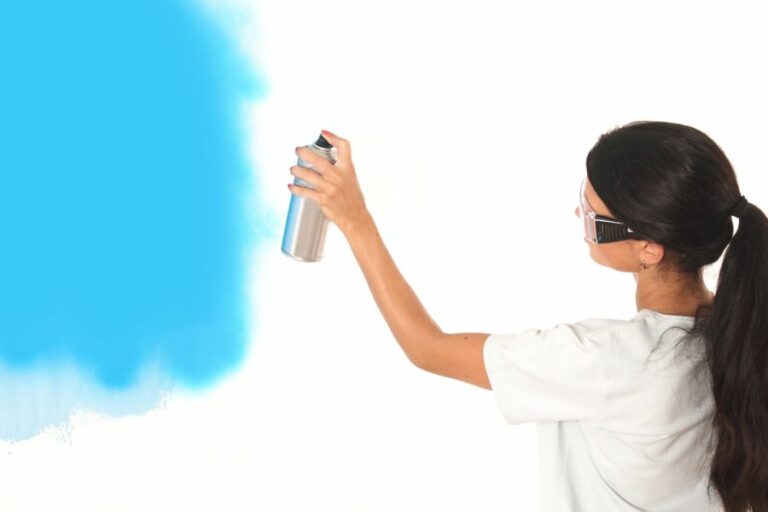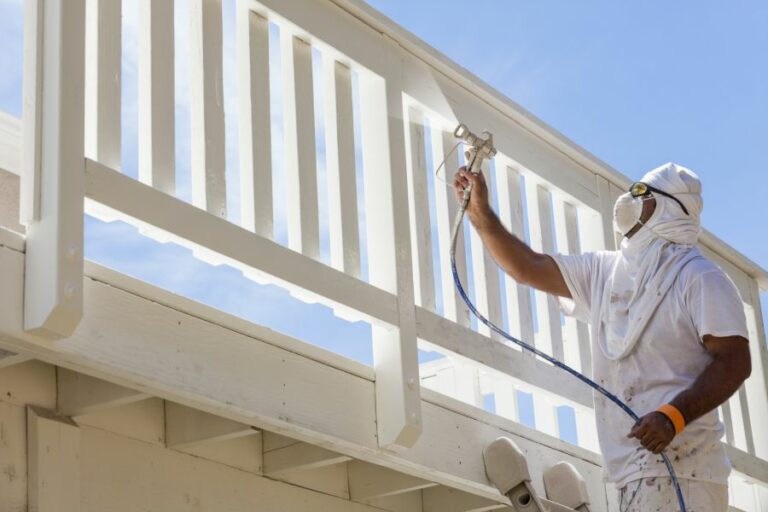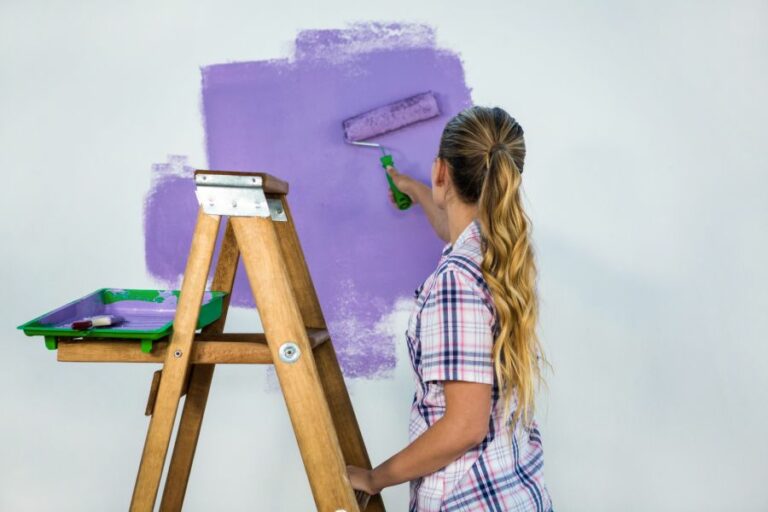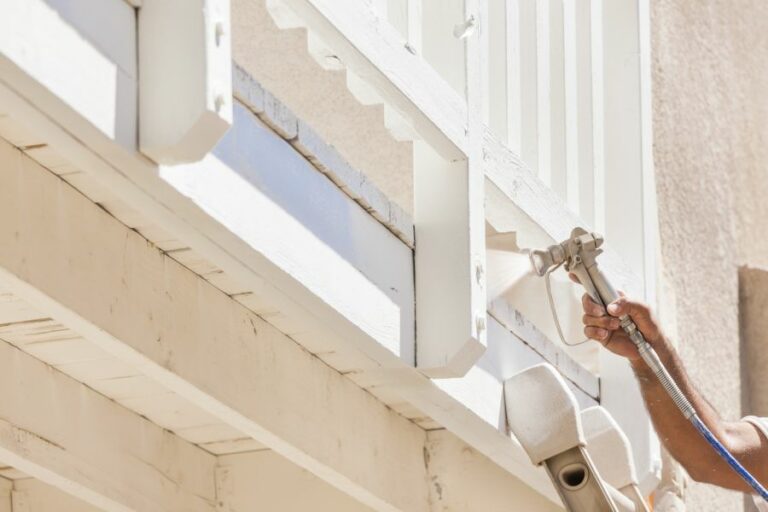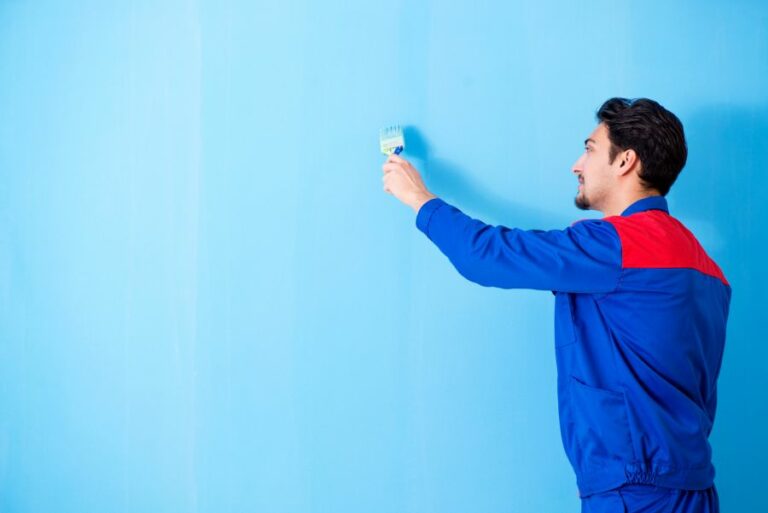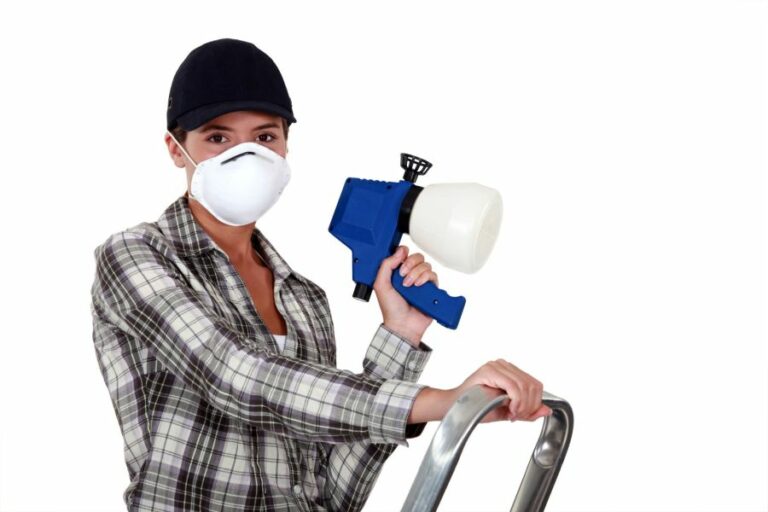Eliminating Spray Paint From Surfaces Guide. What Pros Say
Are you struggling with unsightly spray paint marks on your surfaces? Fret no more! Our comprehensive guide on eliminating spray paint from various surfaces is here to help. With tested and proven methods, we assure you that getting rid of those stubborn stains has never been easier. Stay tuned as we dive into a world of effective solutions tailored to make your surfaces look good as new.
Eliminating spray paint from surfaces guide:
To safely remove spray paint from surfaces, use chemical paint removers or solvents like acetone for metal surfaces, scraping and sanding for wood surfaces, and vegetable oil or alcohol for plastic surfaces. Always wear protective gear, work in a well-ventilated area, and test a small inconspicuous area before application to prevent damage.

Tired of unsightly spray paint on your surfaces? Don’t worry! Our comprehensive guide covers everything from identifying the right cleaning agent to practical removal techniques for various surfaces
. Read on to learn how to effectively eliminate spray paint, restore your surfaces, and prevent further damage.
Contents
- 1 Guide to Safely Removing Spray Paint from Surfaces
- 2 Efficient Spray Paint Removal without Surface Damage
- 3 WD-40 and Its Effectiveness on Overspray Removal
- 4 Methods for Eliminating Rustoleum Paint
- 5 Techniques for Removing Dry Paint from Surfaces
Guide to Safely Removing Spray Paint from Surfaces
Spray paint provides a quick and easy way to cover large areas or create artistic effects on various surfaces. However, it can also be a hassle to remove if it ends up on surfaces where it’s not wanted.
• Removing Spray Paint from Metal
– Chemical Paint Removers
Using a chemical paint remover is a popular and effective way to remove spray paint from metal. Several options are available on the market, but I recommend a product like the KLEAN-STRIP Aircraft Paint Remover.
Apply the remover generously onto the painted metal using a brush, let it sit for the recommended time, and gently scrape off the paint with a plastic scraper.
– Solvents
Alternatively, you could use solvents to remove spray paint from metal surfaces. Acetone, lacquer thinner, or rubbing alcohol can be applied to a cloth and used to scrub the surface until the paint is dissolved.
Always wear gloves and work in a well-ventilated area when working with solvents.
– Sanding and Other Methods
Another option is to use sanding or a wire brush to remove paint from metal surfaces. Begin by sanding the area with coarse sandpaper, and gradually work your way down to finer grits until the paint is gone.
In some cases, using a power tool such as a drill with a wire brush attachment can speed up the process.
• Eliminating Spray Paint from Wood
– Scraping
Start by gently scraping the paint off the wood surface using a plastic scraper or a putty knife. To prevent damage to the underlying wood, hold the scraper at a shallow angle and work parallel to the wood grain.
– Sanding
Sanding is another effective method for removing spray paint from wood surfaces, but be cautious not to damage the wood by over-sanding. Start with coarse-grit sandpaper and work your way towards finer grits as the paint is removed.
– Chemical Paint Strippers
Another option is to use a chemical paint stripper specifically designed for wood surfaces, such as Soy Gel Paint Remover. Apply the stripper according to the product’s instructions and use a plastic scraper to remove the softened paint.
• Eradicating Spray Paint from Plastic
– Vegetable Oil
A non-abrasive method for removing spray paint from plastic is to use vegetable oil. Apply a generous amount of oil onto a soft cloth and gently rub the painted area in a circular motion. The oil should help to dissolve the paint without damaging the plastic surface.
– Alcohol or Nail Polish Remover
Acetone or isopropyl alcohol works well in removing spray paint from some plastic surfaces, but be aware that these solvents can damage certain plastic materials. Always test a small inconspicuous area first before applying it to the entire painted surface.
– Fine Sandpaper
If other methods fail, you may need to resort to gently sanding the paint off the plastic surface using very fine sandpaper, taking great care not to scratch the plastic.
• Additional Tips
- Always wear gloves, safety glasses, and work in a well-ventilated area when using chemical strippers or solvents.
- Test any paint removal techniques on a small inconspicuous area to ensure no damage occurs to the underlying material.
- To prevent future unwanted spray paint messes, use painter’s tape and drop cloths to cover the surrounding areas properly.
• In Conclusion
Eliminating spray paint from various surfaces may seem like a daunting task, but with the right techniques and products, it’s manageable. From chemical paint strippers to sanding and solvents, different methods work best for different surfaces.
Always test a small area first to ensure no damage occurs, and work in a well-ventilated space wearing appropriate safety gear.
Efficient Spray Paint Removal without Surface Damage
Spray paint can be a nuisance when it accidentally makes its way onto surfaces other than the intended target. Whether it’s an accidental overspray, vandalism, or a DIY project gone wrong, removing spray paint without damaging the surface can be a challenging task.
• Safety Measures
Before beginning the process of removing spray paint, it is crucial to ensure that proper safety measures are taken. This includes the use of gloves, goggles, or safety glasses and adequate ventilation in the workspace.
While working with chemicals or solvents, consider wearing a mask to prevent inhalation of potentially harmful fumes.
• Removing Spray Paint from Metal Surfaces
– Method 1: Soapy Water and a Scrubbing Pad
An easy and straightforward method for removing spray paint from metal surfaces is using a solution of soapy water and a scrubbing pad. A dish soap or liquid detergent mixed with warm water should do the trick.
- Apply the soapy water solution to the affected area.
- Gently scrub the surface using a non-abrasive scrubbing pad or a soft-bristled brush.
- Rinse the surface with water and check if the paint has been removed.
- Repeat the process as necessary.
– Method 2: Using Paint Thinner, Nail Polish Remover, or Acetone
Paint thinner, nail polish remover, or acetone can help dissolve the spray paint, making it easier to remove from a metal surface.
- Apply a small amount of the chosen solvent to a cloth or paper towel.
- Gently rub the affected area until the paint begins to dissolve.
- Remove the residue using a clean cloth and rinse the surface thoroughly with water.
Note: Always test a small, inconspicuous area first to ensure these solvents do not damage the surface’s original finish.
– Method 3: Using a Paint Removal Gel or Spray
For larger areas or more stubborn paint, a paint removal gel or spray specifically designed for metal surfaces can be used. Refer to the manufacturer’s instructions and recommendations for the best results.
• Removing Spray Paint from Wood Surfaces
Removing spray paint from wood requires extra care to prevent damage to the wood’s finish.
– Method 1: Sanding
For unfinished wood, sanding the surface with medium-grit sandpaper can effectively remove spray paint.
- Choose a medium-grit sandpaper (such as 120 or 150-grit).
- Sand the surface gently, removing only the layers of paint.
- Follow up with fine-grit sandpaper (such as 220-grit) for a smooth finish.
Note: This method is not suitable for finished wood surfaces, as it will remove the wood’s finish.
– Method 2: Using a Paint Stripper
To remove spray paint from finished wood surfaces without damaging the finish, use a paint stripper specifically designed for wood.
- Apply the paint stripper according to the manufacturer’s instructions.
- Allow the paint stripper to work on the spray paint for the recommended amount of time.
- Gently scrape off the softened paint using a plastic scraper, being careful not to apply too much pressure or damage the wood’s finish.
- Clean the surface with a wood cleaner and a soft cloth to remove any residue.
• Removing Spray Paint from Glass Surfaces
Removing spray paint from glass surfaces is typically a less challenging task, as glass is less likely to be damaged by solvents or abrasive materials.
I recommend using a razor blade scraper, a non-abrasive scrubbing pad or sponge, and a glass cleaner for best results.
- Apply the glass cleaner to the affected area.
- Hold the razor blade scraper at a 45-degree angle and carefully scrape off the paint, taking care not to scratch the glass.
- Use the non-abrasive scrubbing pad or sponge to remove any remaining residue.
- Clean the surface using a glass cleaner and a soft cloth.
• Removing Spray Paint from Concrete Surfaces
Due to the porous nature of concrete, removing spray paint may require a bit more effort.
– Method 1: Power Washing
A power washer can be an effective method for removing spray paint from concrete surfaces.
- Set the power washer to a low-pressure setting to prevent damage to the concrete surface.
- Begin by testing a small, inconspicuous area to ensure no damage occurs.
- Gradually increase the pressure as needed to remove the spray paint.
– Method 2: Using a Commercial Paint Remover
For stubborn paint on concrete surfaces, a commercial paint remover specifically designed for concrete may be necessary.
- Apply the paint remover according to the manufacturer’s instructions.
- Allow the product to sit on the spray paint for the recommended amount of time.
- Use a stiff-bristle brush to scrub the surface and remove the paint.
- Rinse the surface thoroughly with water.
In conclusion, removing spray paint without damaging the surface can be a challenging task, but it is achievable with the proper techniques and materials.
Always take safety precautions and test a small, inconspicuous area before applying any chemicals or solvents to ensure no damage occurs to the original surface. For more information about safe paint removal techniques, visit the US Environmental Protection Agency website.
| How do you remove spray paint without damaging surfaces? | |
|---|---|
| 1. Use warm, soapy water | Apply a solution of warm water and mild dish soap to the painted surface with a sponge, let it sit for a few minutes, then scrub gently and rinse off. |
| 2. Try a paint thinner or remover | Use a paint thinner or remover specified for the type of surface and paint you’re working with. Always test on a small, inconspicuous area first, and follow the manufacturer’s instructions. |
| 3. Use a gentle abrasive | Try using a gentle abrasive like baking soda mixed with water to create a paste, then apply it to the painted surface with a sponge or cloth in gentle, circular motions. Rinse off with water. |
| 4. Utilize a commercial graffiti remover | Consider using a commercial graffiti remover, which is designed to remove spray paint without damaging surfaces. Always follow the manufacturer’s instructions and test on a small area first. |
| 5. Consider professional help | If the spray paint is resistant to other methods, consider consulting with a professional paint removal or cleaning service to help remove the paint without damaging the surface. |
WD-40 and Its Effectiveness on Overspray Removal
WD-40 is a popular multi-use product that has a widespread reputation for being a versatile problem solver.
It is commonly used for lubricating moving parts, preventing rust, displacing moisture, and a host of other applications. One such use is to remove overspray, but how effective is WD-40 in this regard?
• Understanding Overspray and Its Challenges
Overspray is the term used to describe the residual paint that lands on surfaces unintentionally when using spray paint or conducting a paint job. The airborne paint particles can settle on adjacent surfaces such as windows, vehicles, and machinery, leaving an unwanted layer of paint deposits.
Removing overspray can be a demanding task, as it often requires the use of specialized products and techniques to maintain the underlying surface’s integrity.
• Using WD-40 to Remove Overspray
WD-40 has been known to effectively remove overspray from a variety of surfaces, such as metal, glass, and plastic.
Its unique formulation of penetrating oils, solvents, and rust-preventative agents has the ability to dissolve paint particles and provide a gentle yet effective method of overspray removal.
– Metal Surfaces
Due to its rust-preventative properties, WD-40 is an excellent choice for removing overspray from metal surfaces without causing damage or leaving residue.
To remove overspray from metal, simply spray WD-40 onto the affected area and gently rub it with a soft cloth. The overspray should break down and lift away, leaving the metal surface clean and free of paint residue.
– Glass Surfaces
Removing overspray from glass surfaces can be done using WD-40 as well. Its lubricating properties enable it to effectively lift and dissolve paint particles from the glass without causing scratching or damage.
To remove overspray from glass surfaces, spray WD-40 onto a clean cloth and gently rub it on the affected area until the paint particles are lifted and removed.
– Plastic Surfaces
For plastic surfaces, WD-40 can be used with caution, as it may cause discoloration or damage to certain types of plastics. Always test a small, inconspicuous area of the plastic surface first to ensure that no damage will occur.
To remove overspray from plastic surfaces, spray WD-40 onto a soft cloth and carefully rub the affected area. The overspray should dissolve and be removed, leaving the plastic surface clean.
• Alternative Methods for Removing Overspray
While WD-40 is effective for removing overspray from many surfaces, there are alternative methods and products available that can be used depending on the specific needs of your project.
– Paint Thinners and Solvents
For stubborn overspray or surfaces that are not compatible with WD-40, paint thinners and solvents such as acetone, mineral spirits, or denatured alcohol can be used safely and effectively to remove overspray.
Always follow the manufacturer’s instructions and wear appropriate protective equipment, such as gloves and goggles, when handling these products.
– Clay Bars
Clay bars are another effective method for removing overspray, specifically from automobile paint surfaces. These pliable bars can be used to gently lift away paint particles without causing damage to the underlying surface.
To use a clay bar effectively, be sure to follow the manufacturer’s directions and use a proper lubricant, such as a detailing spray, to facilitate smooth and even movement across the surface.
– Overspray Removal Specialists
In cases of extensive overspray damage, it may be necessary to consult with a professional overspray removal specialist. These experts utilize specialized equipment and techniques to carefully remove overspray without causing damage to the affected surfaces.
• Conclusion
In summary, WD-40 is a versatile and effective product for removing overspray from a variety of surfaces. Its unique formulation allows it to dissolve paint particles without causing surface damage, making it a popular and trusted solution for both professional and DIY overspray removal.
However, it is essential to consider alternative methods and products when dealing with stubborn overspray, delicate surfaces, or extensive damage, as well as consulting with overspray removal specialists for professional guidance.
For further information on WD-40 and its various uses, the WD-40 Company website provides a wealth of resources and tips to help you make the most of this versatile product.
Methods for Eliminating Rustoleum Paint
Rustoleum paint is a popular choice for a wide range of painting projects, providing a durable and long-lasting finish on various surfaces. However, there may come a time when you wish to remove this type of paint, and doing so requires a specific approach to ensure thorough and efficient removal.
• Identifying the Surface Type
The first step in removing Rustoleum paint is determining the type of surface on which the paint has been applied. This is crucial because different surface materials require unique removal methods. Common surface types coated with Rustoleum paint include metal, wood, concrete, and plastic.
– Metal Surfaces
To remove Rustoleum paint from metal surfaces, follow these steps:
- Safety precautions: Wear protective gloves, goggles, and a mask to protect yourself from harmful chemicals and paint particulates.
- Apply a paint stripper: Use a reputable paint stripper like Klean-Strip or Citristrip. Follow the instructions on the product label and apply the stripper generously to the painted surface using a paintbrush.
- Allow the stripper to work: Let the paint stripper sit on the surface for the recommended amount of time indicated by the manufacturer, typically between 15 to 45 minutes, or until the paint begins to bubble and lift.
- Scrape off the paint: Use a paint scraper or putty knife to gently scrape off the softened paint. Be cautious not to damage the metal surface underneath.
- Clean the surface: Once the paint has been removed, clean the surface thoroughly with a 50:50 mixture of water and white vinegar to neutralize the paint stripper chemicals. Wipe the surface dry with a clean cloth.
– Wood Surfaces
To remove Rustoleum paint from wood surfaces, follow these steps:
- Safety precautions: Wear protective gloves, goggles, and a mask to protect yourself from harmful chemicals and paint particulates.
- Apply a paint stripper: Choose a paint stripper specifically designed for wood surfaces. Follow the instructions on the product label and apply the stripper generously to the painted surface using a paintbrush.
- Allow the stripper to work: Let the paint stripper sit on the surface for the recommended amount of time indicated by the manufacturer or until the paint begins to bubble and lift.
- Scrape off the paint: Use a paint scraper or putty knife to gently scrape off the softened paint. Be cautious not to gouge or damage the wood surface underneath.
- Sand the surface: Use fine-grit sandpaper (120 grit or higher) to remove any remaining paint and smooth the wood surface.
- Clean the surface: Use a cloth dampened with mineral spirits to remove any residual paint stripper chemicals on the wood. Allow the surface to dry completely before refinishing or repainting.
For more information on the safe removal of wood finishes, consult the EPA’s lead paint safety guide here.
– Concrete Surfaces
To remove Rustoleum paint from concrete surfaces, follow these steps:
- Safety precautions: Wear protective gloves, goggles, and a mask to protect yourself from harmful chemicals and paint particulates.
- Apply a paint stripper: Consult with a local hardware store to find a paint stripper suitable for concrete surfaces. Follow the instructions on the product label and apply the stripper generously to the painted surface using a paintbrush.
- Allow the stripper to work: Let the paint stripper sit on the surface for the recommended amount of time indicated by the manufacturer or until the paint begins to bubble and lift.
- Scrape off the paint: Use a paint scraper or a wire-bristle brush to scrape off the softened paint. Be cautious not to damage the concrete surface underneath.
- Clean the surface: Use a power washer or a hose with a high-pressure nozzle to remove any remaining paint and clean the concrete surface. Allow the surface to dry completely before applying a new finish or paint.
– Plastic Surfaces
To remove Rustoleum paint from plastic surfaces, follow these steps:
- Safety precautions: Wear protective gloves, goggles, and a mask to protect yourself from harmful chemicals and paint particulates.
- Apply a paint stripper: Choose a paint stripper specifically designed for plastic surfaces. Follow the instructions on the product label and apply the stripper generously to the painted surface using a paintbrush.
- Allow the stripper to work: Let the paint stripper sit on the surface for the recommended amount of time indicated by the manufacturer or until the paint begins to bubble and lift.
- Scrape off the paint: Use a plastic scraper or a non-abrasive sponge to gently scrape off the softened paint. Be cautious not to damage the plastic surface underneath.
- Clean the surface: Use a cloth dampened with water to remove any residual paint stripper chemicals on the plastic surface. Allow the surface to dry completely before applying a new finish or paint.
• Conclusion
Removing Rustoleum paint from various surfaces requires a targeted approach based on the specific material involved.
By identifying the surface type, selecting the appropriate paint stripper, and following safety precautions, you’ll be able to efficiently and effectively remove Rustoleum paint, returning the surface to its original condition.
Step | Description |
|---|---|
1 | Put on protective gloves and safety glasses to protect your hands and eyes. |
2 | Apply a generous amount of paint remover or paint stripper on the affected area using a brush or roller. |
3 | Allow the paint remover or stripper to sit on the Rustoleum paint for the recommended amount of time indicated on the product label. |
4 | Use a scraper or a plastic putty knife to gently remove the softened paint. Be careful not to damage the underlying surface. |
5 | Repeat the process if necessary until all Rustoleum paint has been removed. |
6 | Once the paint is removed, clean the surface thoroughly with soap and water to remove any remaining residue. |
Techniques for Removing Dry Paint from Surfaces
Removing dried paint from surfaces can be a difficult task, but with the right tools and techniques, you can achieve excellent results.
• Removing Dried Paint From Wood
Wood can be a tricky surface to clean due to its porous nature. If you follow the steps below, you can effectively remove dried paint from wood.
– Step 1: Scraping the Paint
Begin by using a plastic scraper or a putty knife to gently scrape away the dried paint. Be careful not to gouge the wood or cause any unwanted scratches.
– Step 2: Sanding the Wood
Once the majority of the paint has been scraped off, use fine-grit sandpaper (150 to 220 grit) to lightly sand the remaining paint residue. This can help prepare the surface for other paint removal techniques, such as using a solvent-based paint remover.
– Step 3: Using Paint Remover
Apply a solvent-based paint remover (like a paint stripper) to the affected area, following the manufacturer’s instructions. Leave the paint remover on the wood for the recommended amount of time, usually about 15 to 30 minutes.
When the paint starts to bubble up and lift, use a plastic scraper or putty knife to remove the loosened paint.
Expert Tip: Test a small inconspicuous area first to ensure that the paint remover does not damage the wood.
– Step 4: Cleaning and Finishing Touches
After removing the paint, clean the area with warm, soapy water to remove any residue. If the wood is stained or finished, you may need to touch up any affected areas once the surface is dry.
• Removing Dried Paint From Metal
Metal surfaces, being non-porous, are easier to clean than wood. To remove dried paint from the metal, follow the steps below.
– Step 1: Apply Heat
Using a heat gun or a hairdryer, apply heat to the dried paint on the metal surface. This will soften the paint and make it easier to remove.
Expert Tip: Be cautious when using a heat gun, as it can be extremely hot and can cause burns if not handled properly. Use protective gloves and keep a safe distance from the heated area.
– Step 2: Scrape the Paint
As the paint begins to soften, use a plastic scraper or putty knife to gently remove the paint from the metal surface.
– Step 3: Apply a Paint Remover
If there is remaining paint residue, apply a solvent-based paint remover or a commercial-grade cleaner specifically designed for metal surfaces. Follow the manufacturer’s instructions and use the scraper or a clean rag to remove the paint.
– Step 4: Clean the Surface
Clean the metal surface with warm, soapy water, and dry it thoroughly to prevent rust formation.
• Removing Dried Paint From Glass
Glass surfaces can be cleaned easily and effectively, as long as you take care to avoid scratches. To remove dried paint from the glass, follow these steps.
– Step 1: Scrape the Paint
Using a plastic scraper or a razor blade, gently scrape the dried paint from the glass surface. Be careful not to scratch the glass.
– Step 2: Apply a Glass Cleaner
Apply a commercial glass cleaner to the affected area and wipe the surface with a clean cloth, removing any remaining paint residue.
– Step 3: Clean the Surface
Clean the glass surface with warm, soapy water, and dry it thoroughly using a clean, lint-free cloth or a squeegee for a streak-free finish.
• Removing Dried Paint From Fabric
Removing dried paint from fabric can be challenging, but with patience and persistence, it can be done. Follow these steps to remove paint from the fabric.
– Step 1: Scrape the Paint
Use a plastic scraper or a spoon to carefully scrape off as much dried paint as possible.
– Step 2: Apply a Solvent
Choose a solvent appropriate for the type of paint and fabric. Rubbing alcohol works well for latex paint, while paint thinner or acetone is suitable for oil-based paint. Test the solvent on a small, inconspicuous area of the fabric first to ensure it does not damage the material.
Dampen a cloth or cotton ball with the solvent and gently dab it on the dried paint, being careful not to spread the paint stain. Continue to dab until the paint starts to dissolve.
– Step 3: Wash the Fabric
After the paint has been dissolved, wash the fabric as directed by the manufacturer’s care label. Check if the stain has been removed before drying, as applying heat can set the stain.
In conclusion, removing dried paint from surfaces requires patience, the right tools, and techniques. By following the steps outlined in this article, you can successfully clean various surfaces and restore them to their original condition.
Just remember to take your time and test any cleaning products on an inconspicuous area first to ensure they do not cause any additional damage.
Surface | Method | Instructions |
|---|---|---|
Wood | Sanding | Use sandpaper or an electric sander to gently remove the paint from the wood surface. Start with a coarse grit and move to a finer grit for a smooth finish. |
Metal | Chemical paint stripper | Apply a chemical paint stripper to the metal surface following the manufacturer’s instructions. Be sure to use gloves and protective eyewear. After the appropriate amount of time, gently scrub the paint away with a brush or scraping tool. |
Glass | Scraping | Use a razor blade or scraper tool to carefully remove the dried paint from the glass surface. Be sure to hold the blade at a shallow angle to avoid scratching the glass. |
Concrete | Power washing | Use a power washer with a wide-angle nozzle to remove dried paint from concrete surfaces. Start at low pressure and gradually increase as needed, being careful not to damage the concrete. |
Fabric | Spot treatment and washing | Use a soft brush to gently remove as much dried paint as possible without damaging the fabric. Apply a small amount of paint thinner or stain remover to a cloth and gently blot the paint stain. Rinse the area with water and wash the fabric according to the care instructions. |

